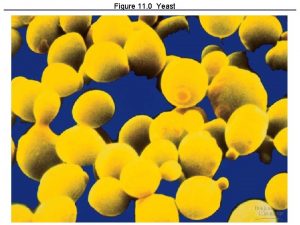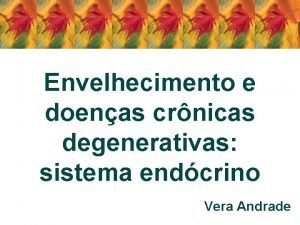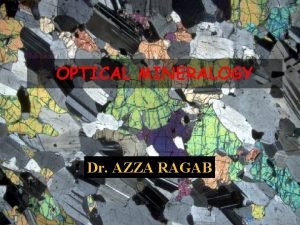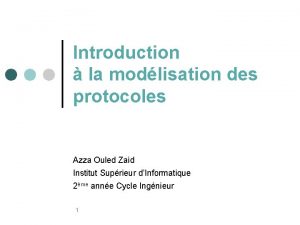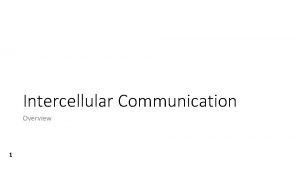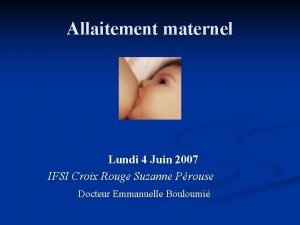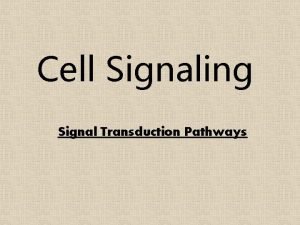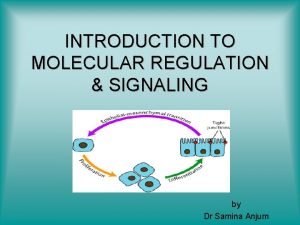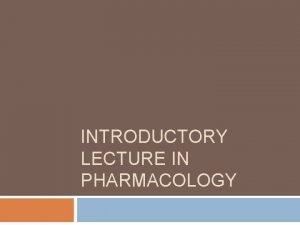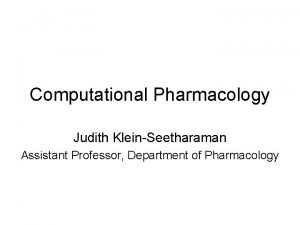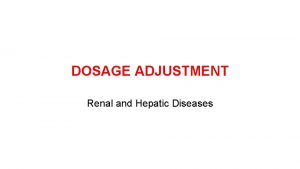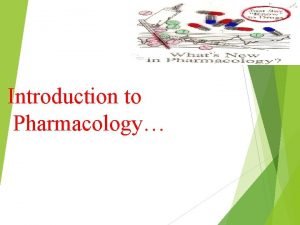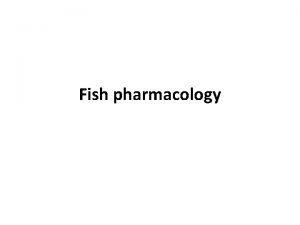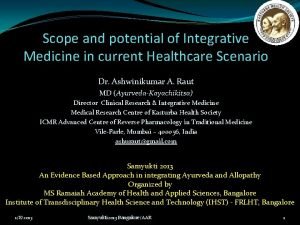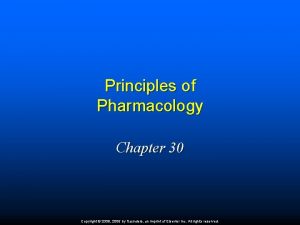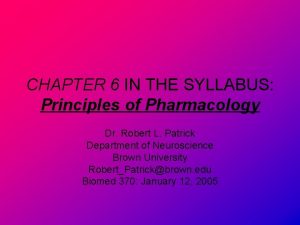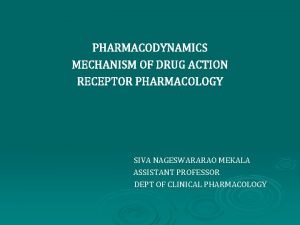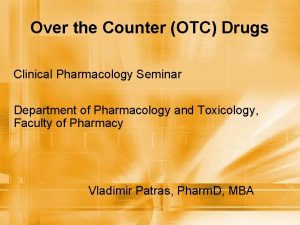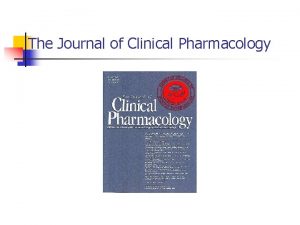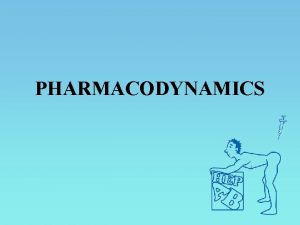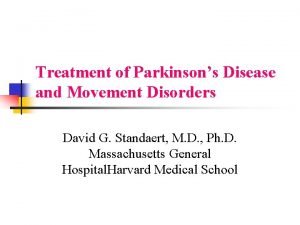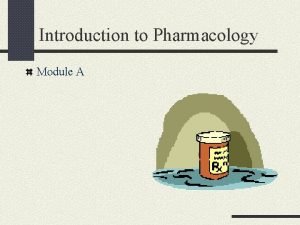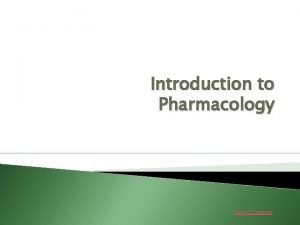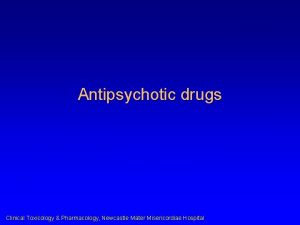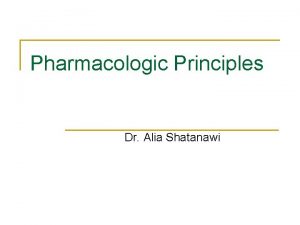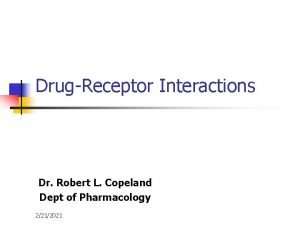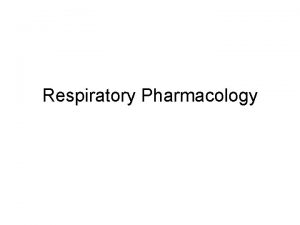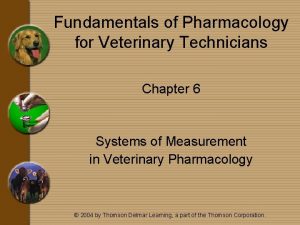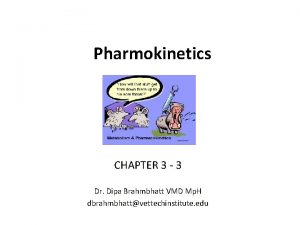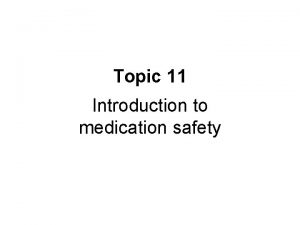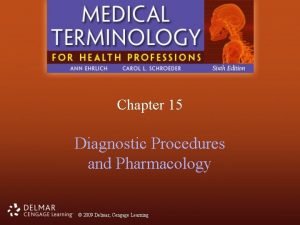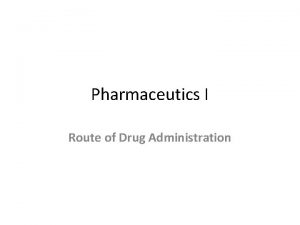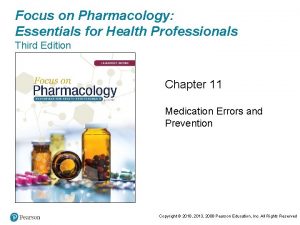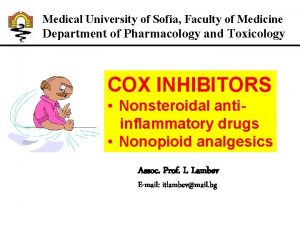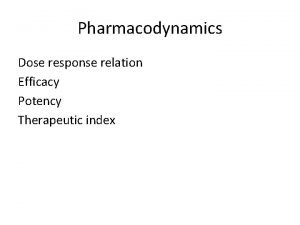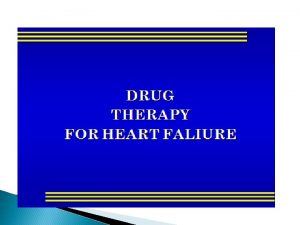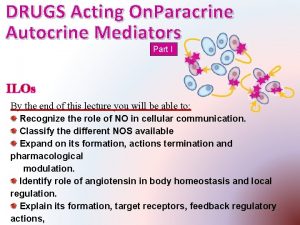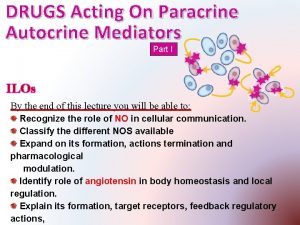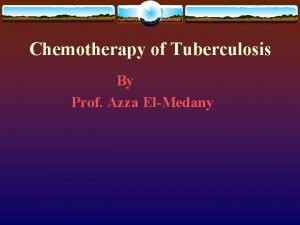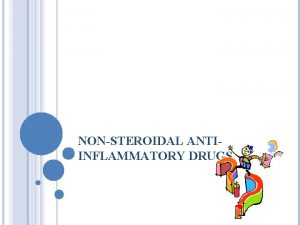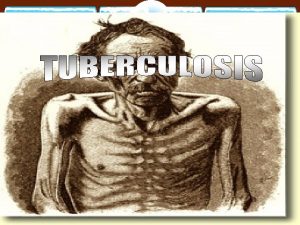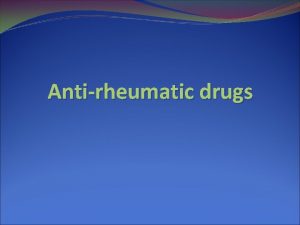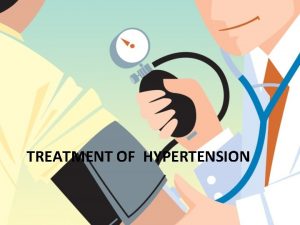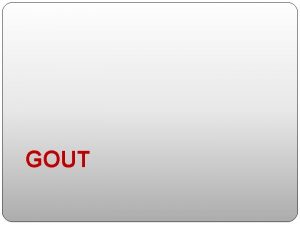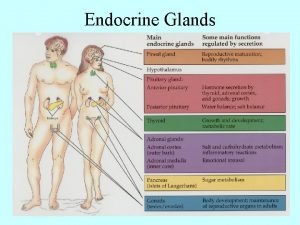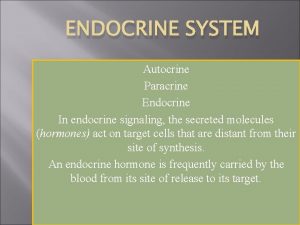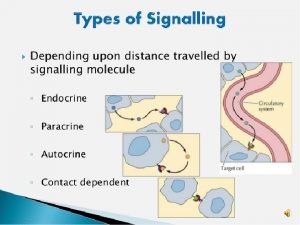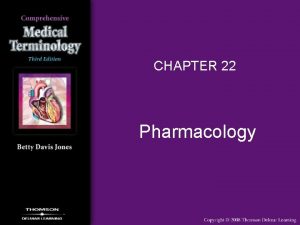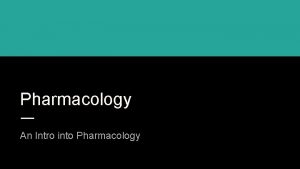Autocrine Paracrine Pharmacology Part 11 Prof AZZA ELMEDANY






































- Slides: 38

Autocrine & Paracrine Pharmacology (Part 11) Prof. AZZA EL-MEDANY

OBJECTIVES At the end of lecture the Students should be able to: 1 - Specify storage sites of histamine 2 - Explain the synthesis, release & inactivation of histamine 3 -List histamine receptors regarding: Type, major location, major biologic effects 4 -Explain the clinical uses of histamine receptors antagonists.

Continue 5 - Describe the synthesis of eicosanoids 6 - Classify drugs that inhibit synthesis of eicosanoids 7 - Enumerate the pharmacological actions of eicosanoids 8 -Enumerate the clinical uses of PGs analogs

CLASSIFICATION OF MEDIATORS EICOSANOIDS PEPTIDES Prostanoids Contractants Angiotensin Endothelin Prostaglandins Thromboxane A 2 NO Leukotrienes Vasopressin …. etc. Tachykinins [SP] Histamine Serotonin …etc ATP / ADP Adenosine Chemokine Growth Factors Relaxants Kinines PURINES Cytokines NPY ANP MONOAMINES OTHERS VIP

H istamine Neurotransmitte r Allergic & Inflammatory reactions Gastric acid secretion

Storage Sites Highest amounts in mast cells Basophils Skin Lung Intestinal mucosa Stomach Brain

Biosynthesis

Inactivation Histamine Imidazole N-methyltransferase Methyl histamine (Oxidation) Diamine oxidase Methyl imidazole acetic acid

H 1 H 2 H H 3 -ve presynaptic 3 + + + H 1

RELEASE v. Primary mechanism during allergic reactions [ Ig. E antibody interacts with antigen on the surface of mast cells ]

Continue v v Enzymes as trypsin or drugs as morphine or other chemicals can liberate histamine Tissue injury by trauma or burn

Histamine receptors Receptor Type Major Tissue Locations Major Biologic Effects H 1 smooth muscle, endothelial cells acute allergic responses H 2 gastric parietal cells secretion of gastric acid H 3 central nervous system neurotransmission H 4 mast cells, eosinophils, T cells regulating immune responses

Adverse Effects Of Histamine Hypotension, tachycardia, flushing Headache, visual disturbances, increase skin temperature Bronchoconstriction, dyspnea, diarrhea

Histamine receptors antagonists

Diphenhydrami n (First generation) Has a Sedating effect Clinical uses : Insomnia Motion sickness Allergic conditions H 1 antagonists ( Blockers )

Loratadine (Second generation) Non-sedating effect Clinical uses Allergic conditions as : allergic rhinitis Conjunctivitis Urticaria H 1 antagonists

Cimetidine H 2 antagonists Inhibitor of gastric acid secretion Used in the treatment of peptic ulcers

BETAHISTINE H 3 antagonists Used in treatment of vertigo in middle ear

EICOSANOI DS


INHIBITORS OF EICOSANOIDS

Drugs Phospholipids Corticosteroids Zileuton Lipoxygenase Phospholipase A 2 Arachidonic Acid NSAIDs Cyclooxygenase Leukotrienes Prostaglandins Prostacyclin Thromboxane (TXA 2)

Comparison in actions between Prostaglandins Thromboxane A 2

Vascular smooth muscles: Prostaglandins Potent vasodilators. Thromboxane A 2 Potent vasoconstrictor.

Blood: TXA 2 a potent inducer of platelet aggregatio n. Prostaglandins inhibit platelet aggregation

Inflammation: Both play important role in Ø inflammatory reactions.

Bronchial smooth muscle: -Prostaglandins -Thromboxane (bronchoconstriction) ( bronchorelaxation )

Uterine smooth muscle: Prostaglandins increase uterine contractions → Menstruation/ Dysmenorrhea/ Labor contractions

GIT smooth muscle: - Prostaglandins IT G motility

GIT secretions: Prostaglandins ↓acid secretion Mucin secretion

Kideny Prostaglandins increase renal blood flow and diuresis.

Central and peripheral nervous systems Fever

Clinical uses of prostaglandins analogs ( Synthetic prostaglandins )

Carboprost 1) Abortion Induce abortion in first trimester.

2) Treatment of postpartum haemorrhage ( vasoconstriction + uterine muscle contraction)

Latanoprost eye drops /in treatment of open angle glaucoma. (↓ IOP by enhancing outflow of the aqueous humar)

Misoprostol Treatment of Peptic ulcer

Thank you
 Phosphorylation cascade
Phosphorylation cascade Paracrine
Paracrine Azza spectra
Azza spectra Azza ouled zaid
Azza ouled zaid Juxtacrine communication
Juxtacrine communication Opergine
Opergine Autocrine hormones
Autocrine hormones Autocrine and juxtacrine signaling
Autocrine and juxtacrine signaling What is pharmacology
What is pharmacology If time permits quotes
If time permits quotes Loading dose formula
Loading dose formula Objectives of pharmacology
Objectives of pharmacology Fish pharmacology
Fish pharmacology Reductinist
Reductinist Chapter 30 principles of pharmacology
Chapter 30 principles of pharmacology Toxicology and applied pharmacology
Toxicology and applied pharmacology Basic principles of pharmacology
Basic principles of pharmacology Receptors in pharmacology
Receptors in pharmacology Clinical pharmacology seminar
Clinical pharmacology seminar Clinical pharmacology
Clinical pharmacology Tachyphylaxis
Tachyphylaxis Factors affecting distribution of drugs
Factors affecting distribution of drugs Pharmacology of drugs acting on respiratory system
Pharmacology of drugs acting on respiratory system Dopamine pharmacology
Dopamine pharmacology Pharmacology module
Pharmacology module Pharmacology introduction
Pharmacology introduction Tactcardia
Tactcardia What is pharmacology
What is pharmacology Pharmacology definition
Pharmacology definition Guaifenasin
Guaifenasin Pharmacology for veterinary technicians
Pharmacology for veterinary technicians Filtration pharmacology
Filtration pharmacology First pass effect
First pass effect Rationale meaning in pharmacology
Rationale meaning in pharmacology Chapter 15 diagnostic procedures and pharmacology
Chapter 15 diagnostic procedures and pharmacology First pass effect
First pass effect Focus on pharmacology essentials for health professionals
Focus on pharmacology essentials for health professionals Basic & clinical pharmacology
Basic & clinical pharmacology Potency vs efficacy
Potency vs efficacy
